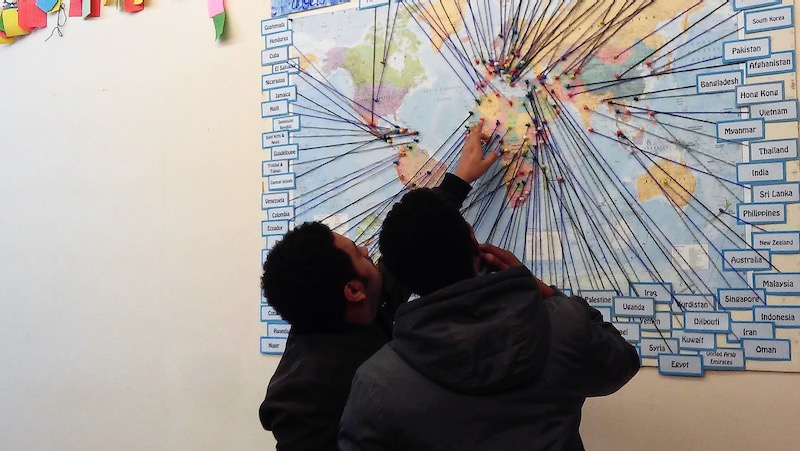On June 25th, the Pontifical Council for the Promotion of the New Evangelisation promulgated a new Directory for Catechesis, the Church’s official guide to teaching the faith. This is the first edition this century; indeed, this millennium. It is rich in content, but particular attention must be drawn to those elements which it calls, and which indeed are, “urgent”.
The core distinctive theme of the new Directory is the contextualisation of catechesis in evangelisation, emphasising the “intimate union” between planting the seed of the initial kerygma (the essential Gospel message), and its fulfilment in Christian maturity through the action of the Holy Spirit.
A “kerygmatic catechesis” is proposed in which those being taught are formed in such a way that they may faithfully witness to Christ, incarnate in their own experience of an authentic encounter with Him, credibly witnessing to the infinitude of divine mercy and love by the charity practised in their personal lives.
Such an approach is inspired by what the Directory calls a “catechumenal model”, inspired by the ancient practice of introducing unbaptised converts into the faith. Applied to those who whilst baptised, are not necessarily evangelised, this takes on a new evangelistic intention of bringing them into the Christian life. Proper formation of catechists, candidates for Holy Orders, and priests in the catechetical directives of the Church is emphasised, without which such a model would be impracticable.
The Directory points to the implication this has for human persons in all their diversity, stating that “the specific contribution of catechesis to evangelisation is the attempt to enter into relationship with the experience of persons, with their ways of living and… personal and community growth”. Especially at a time when the traditional means by which the faith was transmitted (including the family and wider society) are often in profound crisis, this means enabling every Catholic to internalise the experience of faith, personally appropriating and receiving it in responsible freedom.
To that end, the Directory relates the importance of inculturation of the faith, including for those who need special care due to their particular vulnerability or marginalisation, such as persons with disabilities, migrants, and prisoners.
It also advocates that such catechesis entail a truly “missionary discipleship”, in which formation in faith in turn leads to active participation in the Christian community in their full dignity as children of God. This echoes the words of Pope Francis in Evangelii Gaudium, “Io sono una missione su questa terra” – “I am a mission on this earth; that is the reason why I am here in this world. We have to regard ourselves as sealed, even branded, by this mission of bringing light, blessing, enlivening, raising up, healing and freeing”.
Having set out these foundations, the Directory goes on to discuss important social and cultural contexts in which a catechesis more mission-focused and radically rooted in the Gospel may be applied.
The urgent need to defend the intrinsic and inalienable dignity and integrity of the human person is strongly affirmed, especially in the face of what Pope Francis has called the “throwaway culture” that has led to the disregard for human life and degradation of the natural environment globally. The Directory necessitates that catechesis enable understanding of Christian teaching on these points, and an “environmental conversion” that tackles the roots of problems of climate change, global inequality, and social decline.
It also takes on other important facets of modernity. The phenomena of digital media, technology, and culture, which were in their infancy when the last Directory was issued but are now the everyday reality of our age, is addressed in its evangelistic and human developmental opportunities, but also its limitations as to engendering “virtual” rather than meaningful interactions and relationships. Education and literacy is called for to enable discernment of quality and reliability of digital content.
Crucially, a brand new element is introduced as part of the catechetical discussion: beauty. Only mentioned as a footnote in the previous Directory, this transcendent dimension of the human experience, of the Creator and therefore of creation, as part of the “mystagogic” initiation of the individual and a catechesis “rich in signs and expressions and beneficial for the integration of every dimension of the person”, is given new emphasis. Pope Paul VI’s message to artists at the end of the Second Vatican Council is recaptured: “This world in which we live needs beauty in order not to sink into despair”.
The new Directory for Catechesis is one of the best, most useful documents of the Church, with ‘urgent’ contents for integration into her life, brilliantly building on what came before. Rooted in the revelation of Christ, it gives important and practical guidelines about the tasks needed to bring the fullness of the Gospel into the lives of the faithful. Its publishing could hardly be more providential.
Dr Caroline Farey was a member of the working party which edited the Directory for Catechesis for the Pontifical Council for the Promotion of the New Evangelisation. She was formerly Director of the BA in Catechesis at the Maryvale Institute and Lecturer at St Mary’s College Oscott, and now provides catechetical formation, training, and resources, in complete accord with the Church’s Directory, at www.theannunciation.org.uk. The Directory for Catechesis may be purchased from the Catholic Truth Society at www.ctsbooks.org.



 Loading ...
Loading ...
What do you think?
You can post as a subscriber user ...
User comments (0)